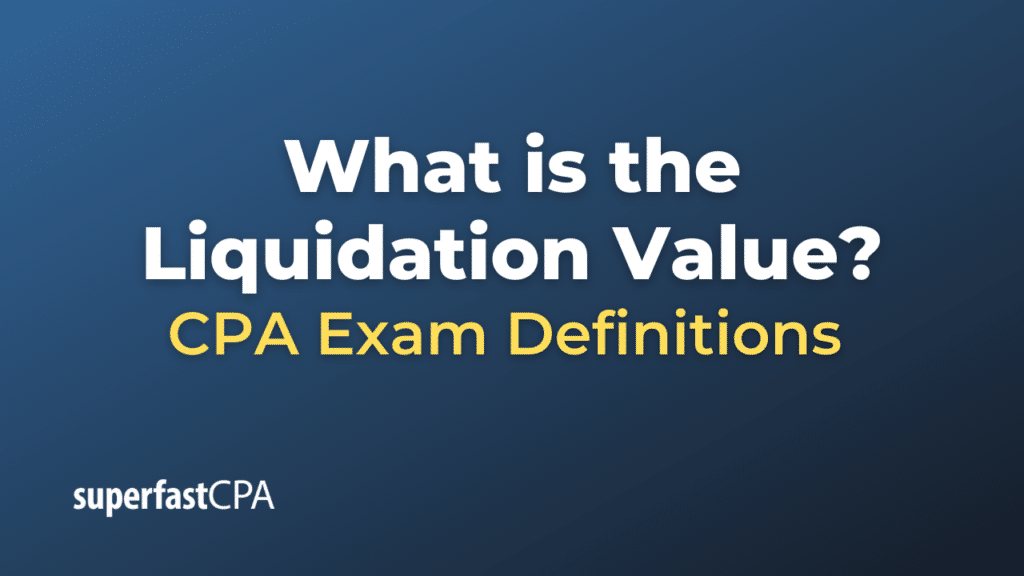Liquidation Value
Liquidation value refers to the estimated amount of money that an asset or a company could be expected to fetch in the event of liquidation, which is the process of selling off all assets when a company is closing down or needs to pay off its debts.
There are two primary types of liquidation value:
- Orderly Liquidation Value: This is the estimated amount that would be received if all assets are sold individually over a reasonable period, allowing for proper marketing to attract the maximum number of bidders.
- Forced Liquidation Value: This is the estimated amount that would be received if all assets are sold as quickly as possible, such as at an auction. This value is usually less than the orderly liquidation value as the sale is often rushed and potential buyers may not be willing to pay a premium.
Liquidation value is an important concept in various financial contexts, including:
- Bankruptcy proceedings, where assets are sold off to repay creditors.
- Valuing a business, particularly in the context of a merger or acquisition. Potential acquirers will want to know the company’s liquidation value as a “worst-case” scenario.
- In lending situations, where a bank or financial institution needs to understand the value of assets that could be sold off in case of a default.
The liquidation value is usually less than the market value or book value of the assets because of the quick-sale conditions and costs associated with the process. It’s also important to note that calculating liquidation value can be complex and often requires professional appraisers to assess the value of assets accurately.
Example of the Liquidation Value
Imagine that a manufacturing company, ABC Corp, is facing financial difficulties and decides to liquidate its assets. The assets include a factory building, machinery, and unsold inventory.
- Factory Building: An appraiser estimates that under an orderly liquidation scenario, with proper marketing and enough time to attract multiple buyers, the factory building could sell for $1,000,000. However, under a forced liquidation scenario, where the building would need to be sold quickly at an auction, it might only fetch $800,000.
- Machinery: The manufacturing machinery, if sold under orderly liquidation conditions, could be worth $500,000. But under forced liquidation, it could only bring in $350,000.
- Inventory: The unsold inventory, which includes finished goods and raw materials, might be sold for $200,000 under an orderly liquidation but might only bring $100,000 in a quick, forced liquidation scenario.
So, the total orderly liquidation value of ABC Corp’s assets would be $1,700,000 ($1,000,000 + $500,000 + $200,000), and the total forced liquidation value would be $1,250,000 ($800,000 + $350,000 + $100,000).
These figures represent the estimated amounts that ABC Corp could receive if it sold off its assets. This information would be vital for the company’s creditors, potential buyers, and others interested in the company’s liquidation process. Please note that this is a simplified example, and actual liquidation processes can be much more complex.













